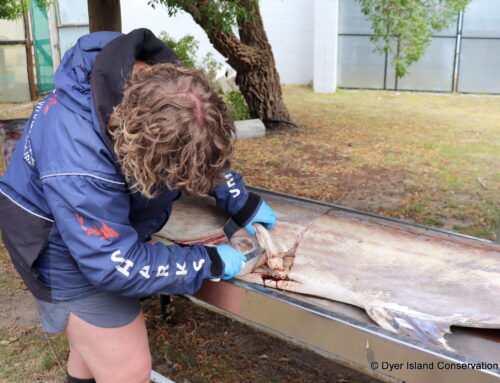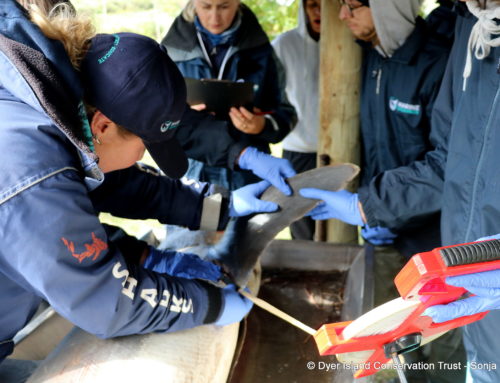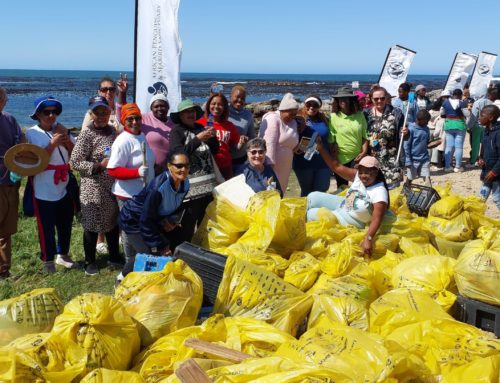Killer whales in Dyer Island area
September 14, 2012 by dyertrust
What is that? Is it splashes from a boat? Is it the wind coming in? NO! It is hundreds of common dolphins swimming into the bay!!!
From the top of the water tower we can see up to 15km on a good day with clear visibility. On this unique day in August we spotted a pod of common dolphins 11 km away. The pod stretched more than 1 km. We alerted the whale watching boat and directed them to the sighting. They called us back shortly afterwards and reported that besides the dolphins they saw 7-8 killer whales hunting the dolphins. This is a known behaviour along South African coasts, but has never been observed in our Dyer Island area. In fact this is only the second time that killer whales have been sighted from the whale watching boat since we started in 2000. So the excitement level was high and the DVD was watched over and over again in the offices in the afternoon.
The killer whales did not catch any dolphins while the boat was there, and the pod only stayed in the area for 40 minutes. Our research boat Lwazi did try to catch up with the pod, but the dolphins had left the area and the tracking team on the tower had lost sight of them before the boat was even close to the area the pod were sighted by the whale whisperer.

Southern right whales are a common sight here in August, and it has been the month where the surface active groups (SAG) returned and increased in numbers. At the beginning of the month we had 4 to 5 groups with max 3 individuals – reaching 5 to 6 groups with up to 7 individuals at the end of the month. So more and more animals are moving in. SAG are normally related to courtship and mating behaviour.
Gradually, as we reached the end of August, we saw fewer and fewer humpback whales; by now most of them should have reached the shoreline of the Eastern Cape and Mozambique.
Anna Skinnars and Emma Fitzmaurice Vestergaard are still the backbones of the volunteer team and they make an amazing difference conducting the theodolite tracking, entering data, analysing data, and basically pitching in whenever a helping hand is needed. They ROCK!
They also have special tasks, and Emma has been converting and filtering out all the effort data from the whale watching boat. Anna has prepared the data for the MammalMap and based on the whale watching boat data and the work of the whale research team – DICT are the first organization in Africa so submit observation data of marine mammals.




